It’s always the same picture on every campsite or motorhome pitch: as soon as a caravan or motorhome reaches its allocated pitch, the crew jumps out of the vehicle. After a quick search in the gas locker or an outside storage compartment, the cable reel and blue CEE plug are lying on the floor.
Then quickly plugged the CEE plug into the vehicle’s external socket and connected it to the cable reel. Once the cable drum has been unrolled, the plug is inserted into the supply pillar. And the electrical devices in the vehicle are already running on the electricity from the camping site or pitch.
Inhaltsverzeichnis
What is a CEE plug?
CEE stands for “Commission on the Rules for the Approval of the Electrical Equipment” – in other words, the “International Commission for the Regulation of the Approval of Electrical Equipment”. CEE plugs are available for a wide range of applications. The circular connector, as it is so beautifully named, is based on the international standard IEC 60309. This generally applies to “plugs, sockets and couplings for industrial applications”.
What CEE plugs are available?
These circular connectors differ in color: For example, at a frequency range of 50/60 Hz, purple stands for a voltage of 20 to 25 volts. White stands for 40 to 50 volts and yellow for 100 to 130 volts. Our blue CEE plugs mark the voltage from 200 to 250 volts and red for 380 to 480 volts.
There is also black for 500 to 690 volts and green with a frequency range of 60 to 500 Hz for a voltage level of 20 to 500 volts. All connector systems have one thing in common: due to their different designs, it is impossible to accidentally connect plugs and sockets of different amperages.
How does a CEE plug work?
The two most common connectors are the red ones for three-phase alternating current with neutral and protective conductor and a rated voltage of 400 volts. On the other hand, the blue connector type, the camping plug, has an outer conductor and neutral and protective conductor and is designed for a voltage of 230 volts.
Officially, these are called “L+N+PE-6h connectors”. L stands for the current-carrying conductor, N for the earthed neutral conductor and PE is the protective earth conductor, which is positioned at 6 o’clock, i.e. at the bottom.
When designing the connectors, the developers attached great importance to optimum current transmission through large contact surfaces between the pins of the plug and the sockets of the socket. Slotted brass sleeves with steel tension springs are used for the bushes.
This means that the entire sheath surface is effective for current transfer and at the same time prevents unwanted heating under high current loads. The production of the plugs is standardized so that no plugs are commercially available that do not meet the high European safety requirements. Furthermore, the plugs are more robust than standard household Schuko plugs, they are splash-proof and can withstand 16 amps of current.
Here Europe is united for once
Perhaps you sometimes wonder why things are not more uniform in Europe. CEE adapters are a prime example of the opposite. These can actually be found as standard on campsites, motorhome pitches and in marinas throughout Europe. Even the manufacturers of leisure vehicles such as caravans and motorhomes as well as motor and sailing yachts only use the blue caravan sockets for the power supply, with which the shore power reaches the vehicle.
You don’t need to worry about the voltage within Europe. It is generally 220 to 230 volts. Most campsites have supply pillars into which your CEE socket will fit. However, many campsites also use typical local connections. You will then need an appropriate adapter. Any campsite operator will be happy to help you.
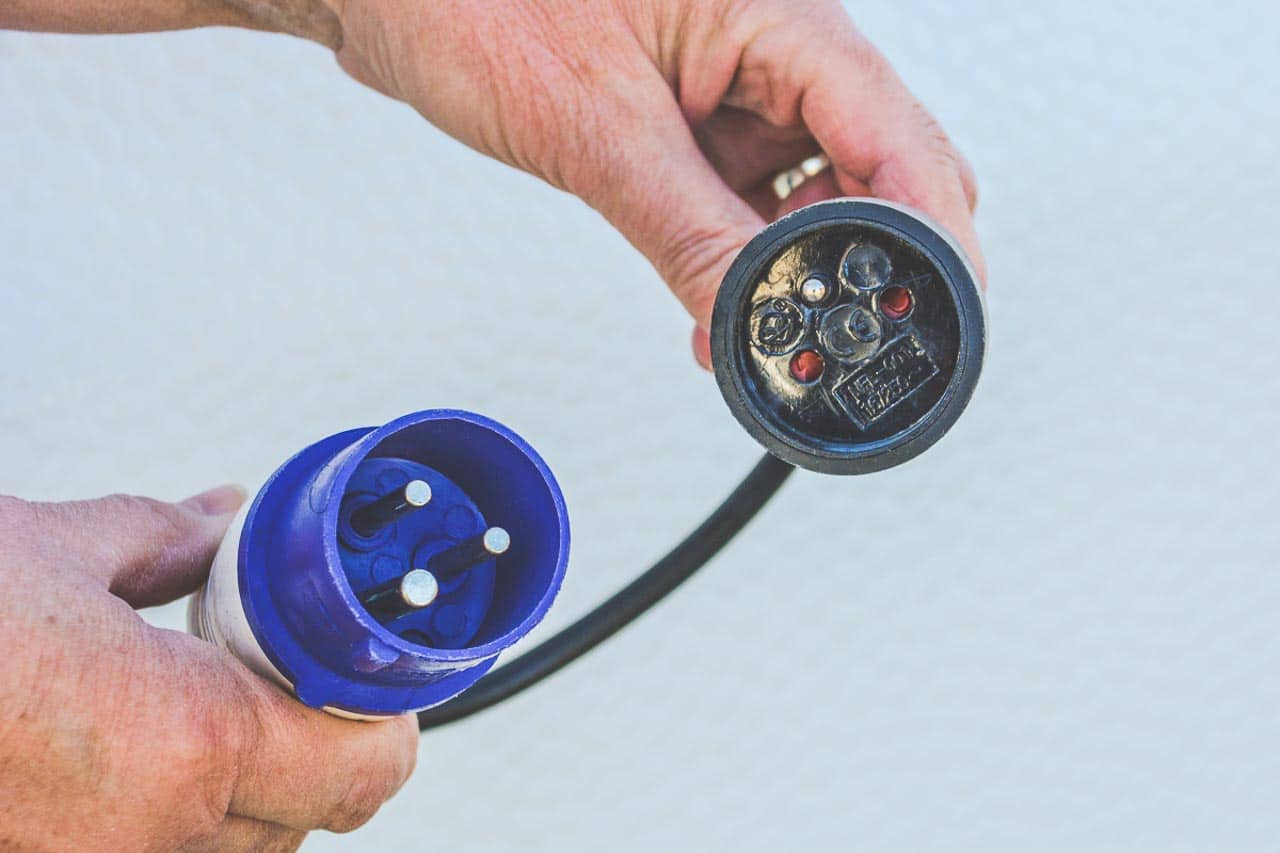
How does it work with electricity on the campsite?
Where you used to find a bucket of cold water next to the caravan to cool the beer, today there is an electrically powered cool box. Electric power, which provides the necessary energy in leisure vehicles, is now standard. After all, a coffee machine, fridge and lighting should contribute to the usual comfort on camping trips. In addition, the vehicle battery or the cell phone, tablet or camera battery need their juice for the next use.
Your motorhome or caravan is equipped with a CEE power socket, which is located in a housing in the outer wall of the vehicle. Inside, the cable runs fused into the electrical devices and 230-volt sockets of your vehicle. If you now open the flap, you will discover the three pins of the CEE adapter. This is where the CEE coupling of your power cable is plugged in. Now connect the other end to the power supply pillar at your parking space and your vehicle will have 230 volts.
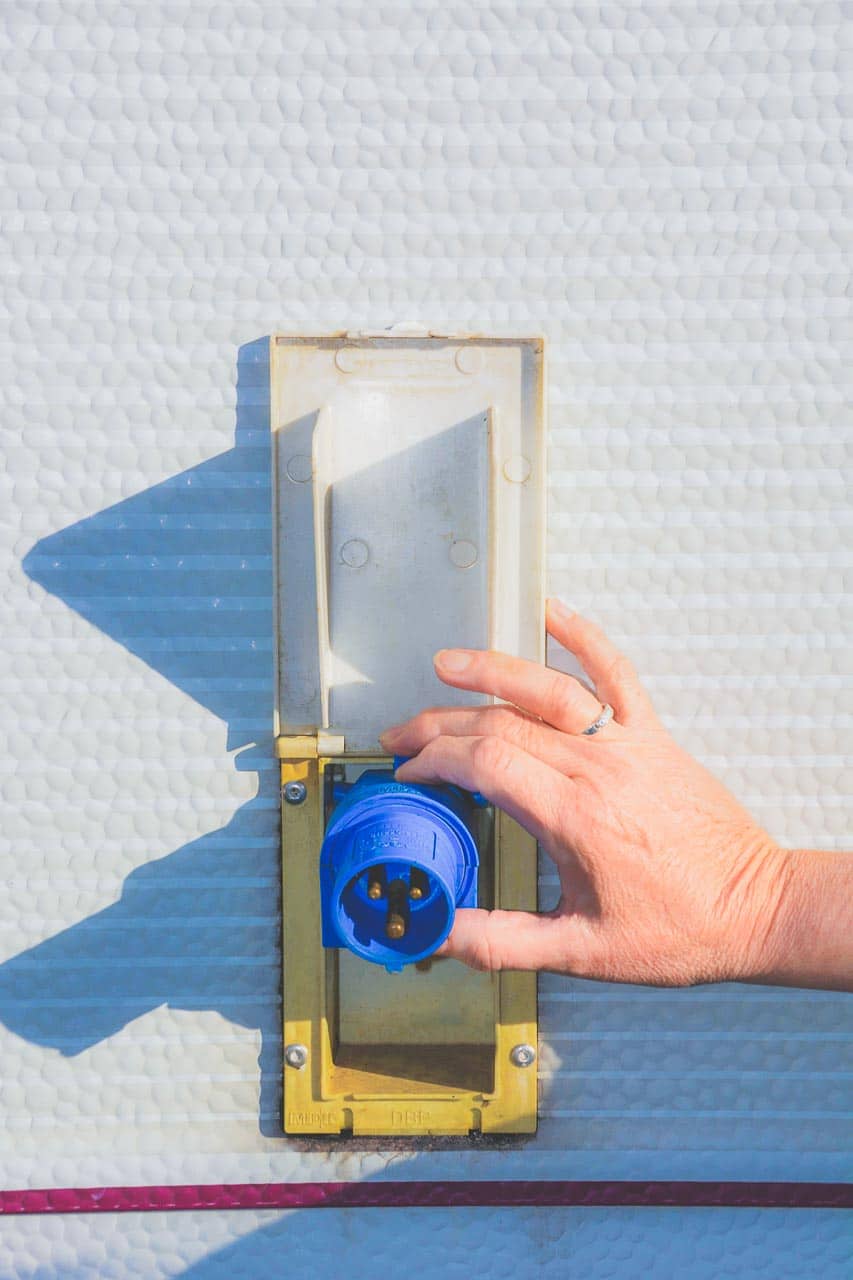
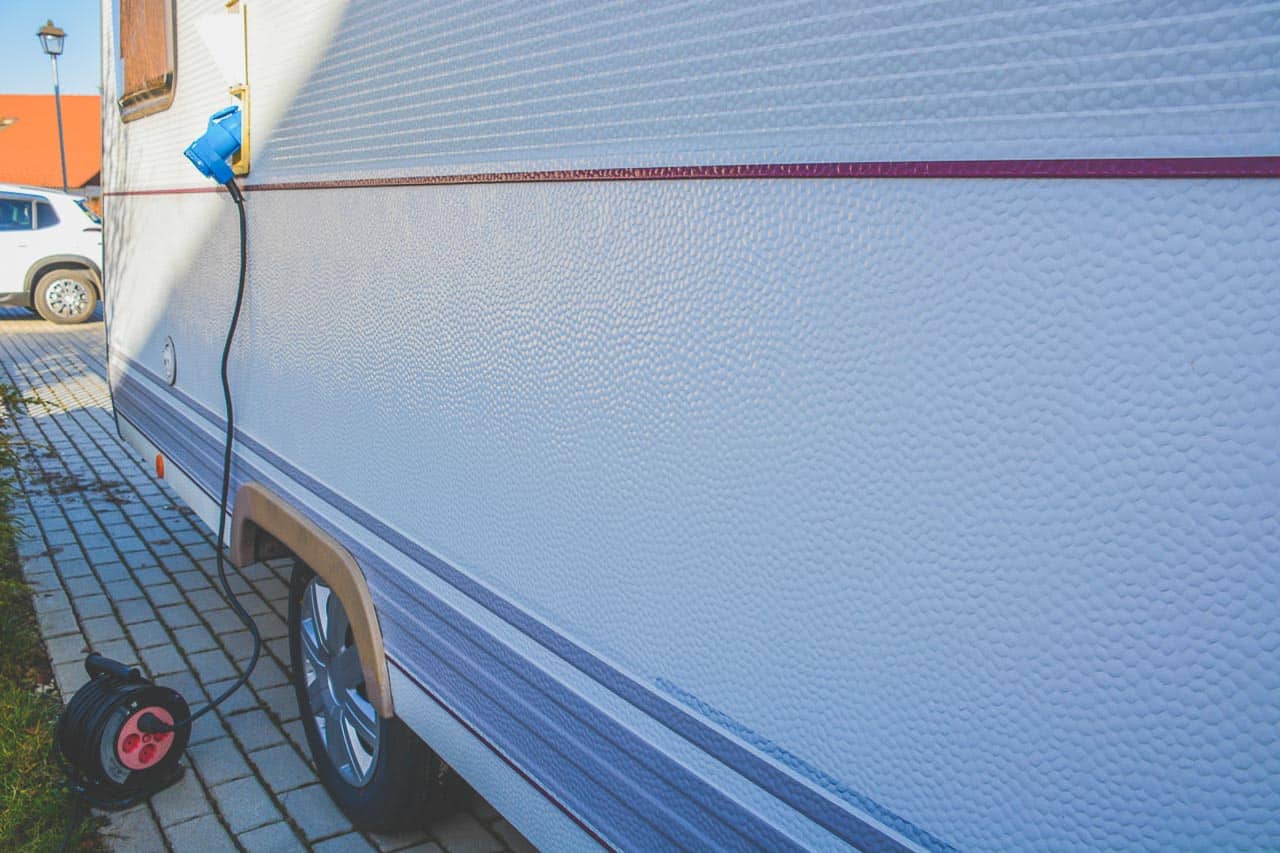
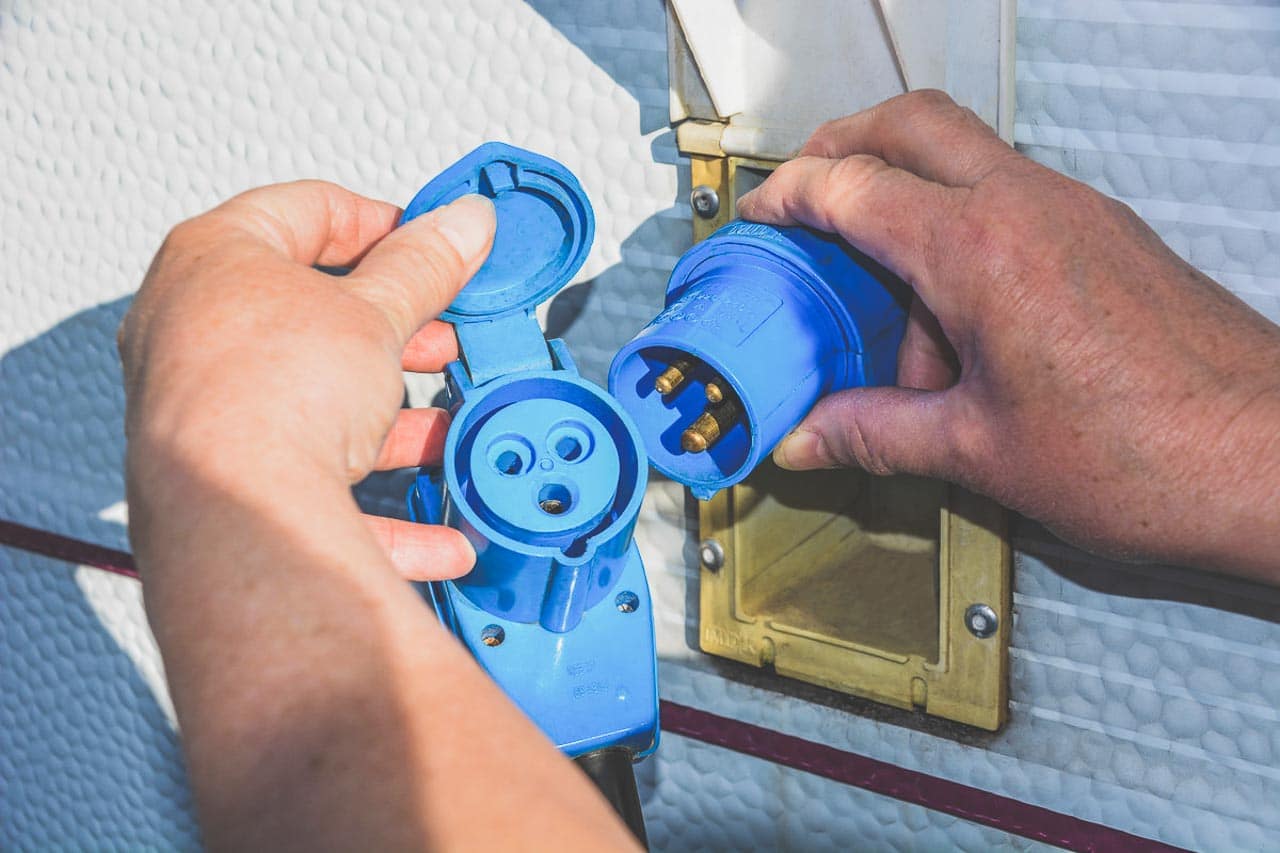
On the safe side with the CEE
In addition to robustness and protection against dust and moisture, there are other advantages to using CEE plugs. As already mentioned, it is impossible to connect a CEE plug “incorrectly”. In addition, the connections are all designed for 16 amps. Many campsites often only have a low fused power supply of 4, 6 or 10 amps. Your kettle or hairdryer can quickly blow the fuse on your pitch. However, you can easily calculate the required amperes for the use of your electrical appliances:
Watt / Volt = Ampere.
This means that your hairdryer has 850 watts. Divide this by 230 volts and you get around 3.7 amps.
No products found.
Which CEE plug should I choose?
Play it safe with a CEE cable. This provides you with a CEE plug at the front for your vehicle’s external socket and a CEE plug for the socket pillar at the campsite. The length should be 25 meters to cover the distance to the next distribution box. As the supply stations on some campsites are up to 40 meters apart, you can also bridge longer distances with this length.
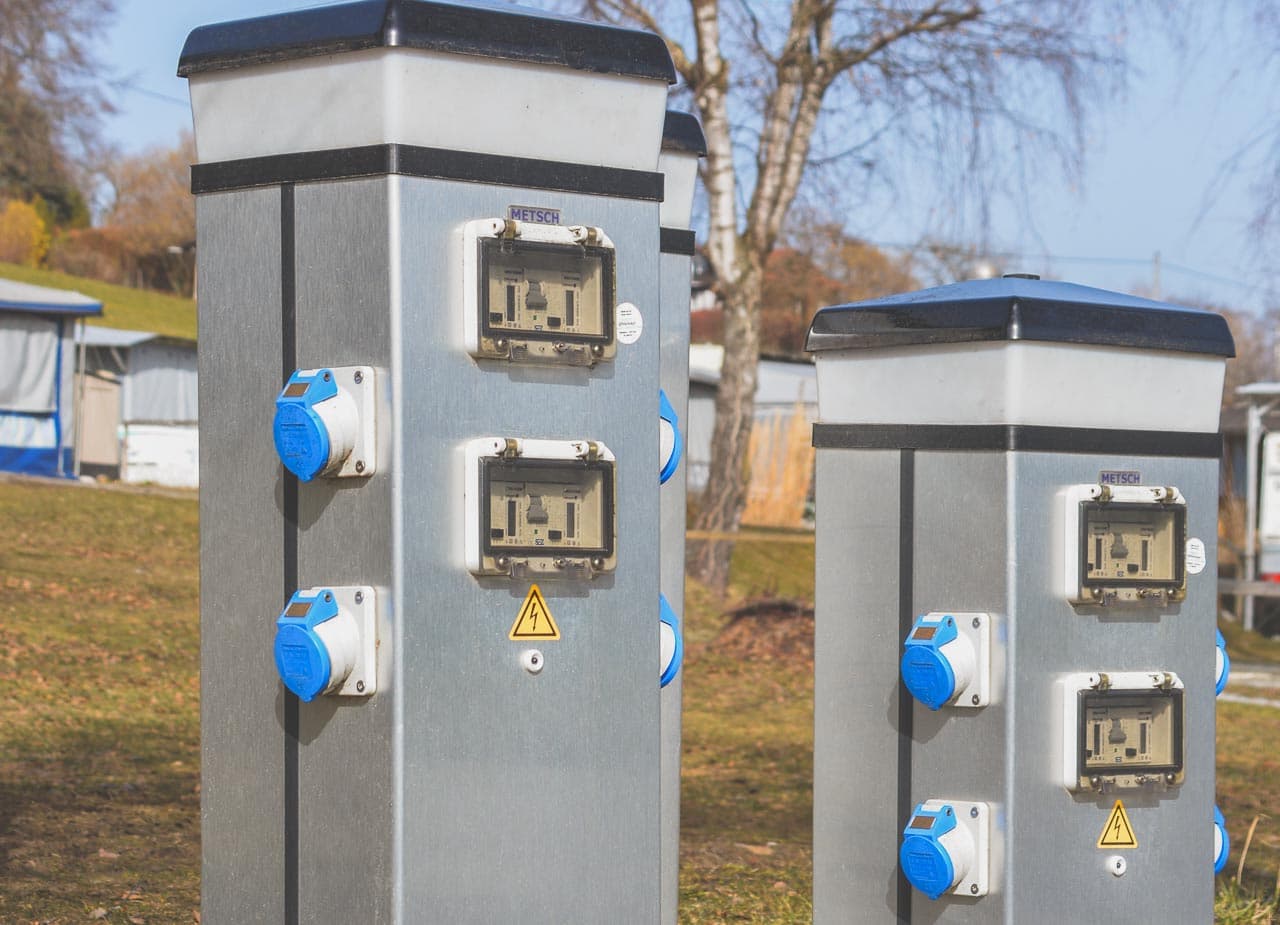
Make sure that the power cable is made of rubber and has a diameter of at least 2.5 mm². Rubber cables offer the great advantage that they are insensitive to UV radiation, rain and snow as well as mechanical influences thanks to the standardized protection class IP44.
- Zuverlässiges Campingkabel für Wohnwagen und Wohnmobile: Hochwertiges CEE-Kabel mit 230V…
- Optimale Energieversorgung für Outdoor-Abenteuer: Ideal als Campingleitung oder…
Alternatively, you can also use adapter cables that you connect via an extension cable. These are available on cable drums in various lengths. When in use, wind the cable completely off the drum to avoid heat build-up. If you then secure the connections against rain and dirt with suitable safety boxes, nothing can go wrong.
- Langlebige Zuverlässigkeit in jeder Umgebung: Ideal für den Einsatz auf dem Camping Platz, im Boot…
- Maximale Flexibilität und Vielseitigkeit: 25 m schwere Gummischlauchleitung H07RN-F 3G2,5 mit…
In addition to the “normal” CEE coupling, you will also find those with an additional socket. When you use this adapter, you connect your caravan or motorhome to the power grid. However, you can also use the earthed plug to operate another electrical appliance such as an electric barbecue.
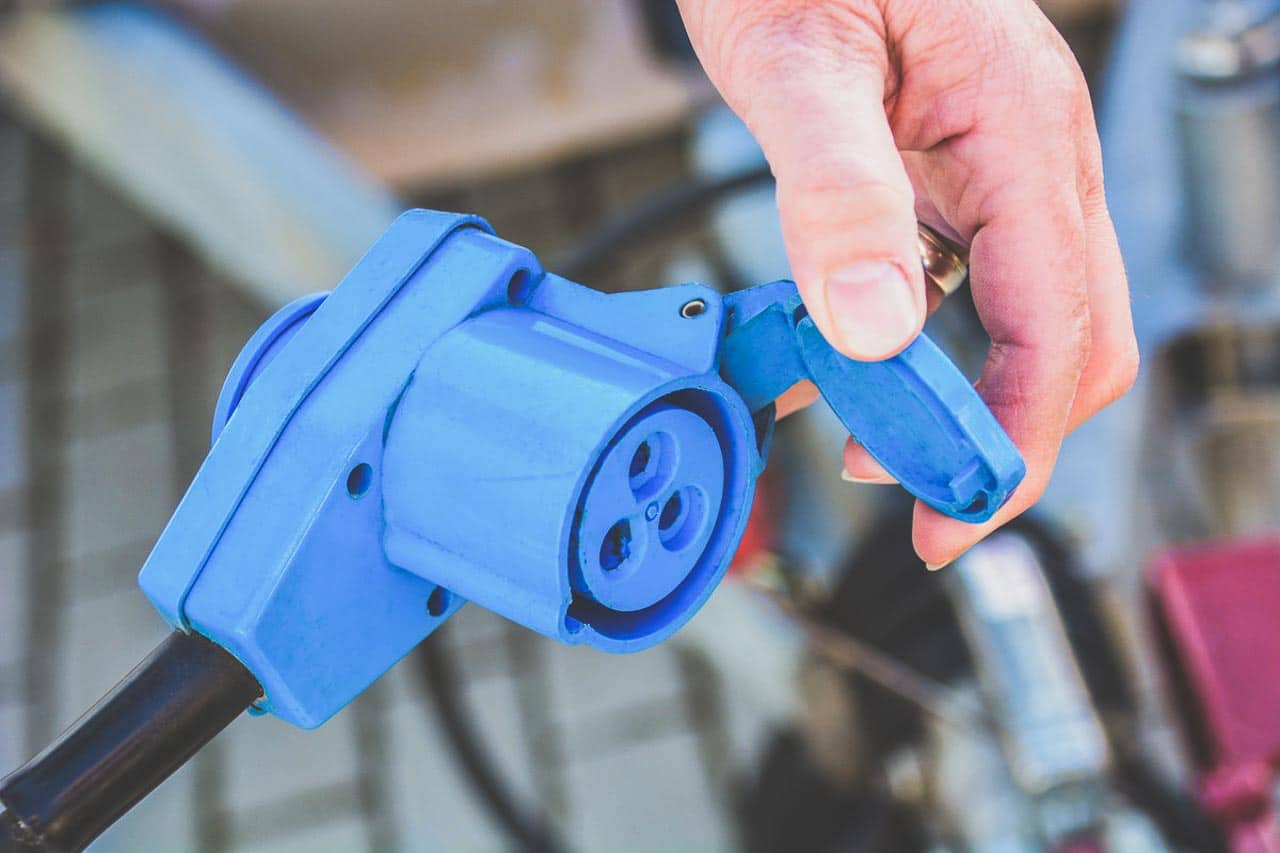
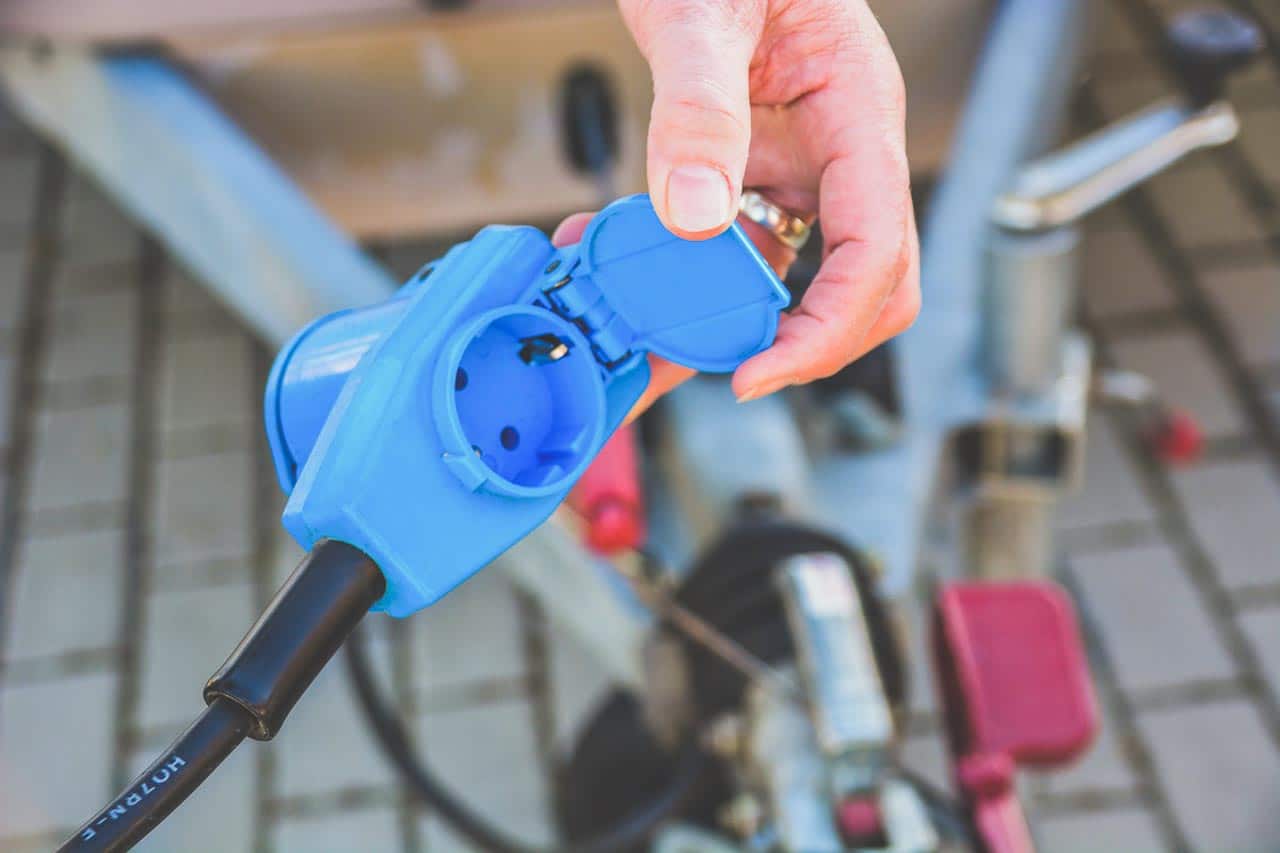
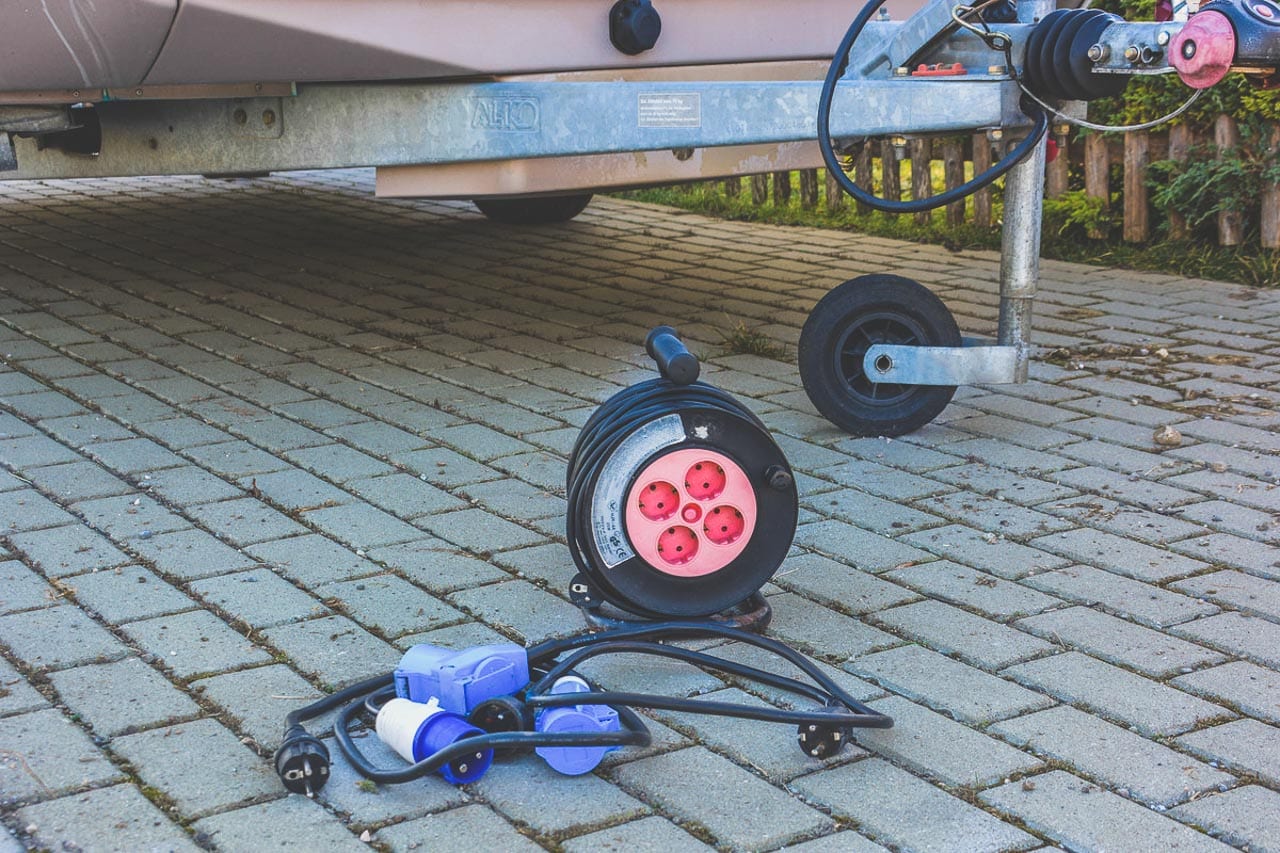
No products found.
Conclusion on the CEE plug
When camping, whether with a tent, caravan or motorhome, there is no getting around the purchase of a CEE adapter. If you want to be supplied with electricity on your camping pitch, you need a CEE plug and an extension cable. Thanks to the standards and manufacturing guidelines for the adapters, you are always on the safe side when using them and can enjoy the power from your campsite or pitch without any worries.
[su_box title=”Das könnte dich auch interessieren”]
- Strom in Wohnmobil und Wohnwagen: Landstrom – aber richtig
- Strom in Wohnmobil und Wohnwagen: Stromverbrauch und Stromsparen
- Strom in Wohnmobil und Wohnwagen – Die Grundlagen
- Der richtige Kabelquerschnitt für 12V im Wohnmobil
- CEE-Kabeltrommel
- CEE-Adapter
- Camping Stromkabel
- Praktisch, flexibel, reisefertig – Energieversorgung mit dem CamperCase (mit Video)
- Einsteiger-Tipps für alle, die beim Campen was erleben wollen
- 10 Camping-Tipps nicht nur für Einsteiger
[/su_box]
Photos: © Hubert Hunscheidt
Letzte Aktualisierung der Preise am 2026-01-09 / Affiliate Links / Bilder von der Amazon Product Advertising API



